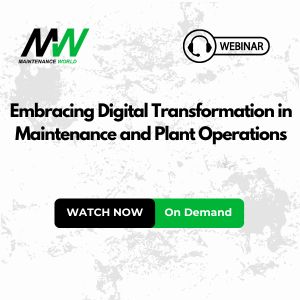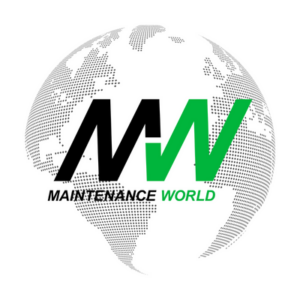Too Much Information?
Bob Williamson
“TMI.” Here we go again with those “TLAs” (three-letter acronyms) discussed in last month’s column. TMI used to refer to the Three Mile Island nuclear power plant “meltdown” in 1979. Now, it means “Too Much Information.”
It seems as if we truly live in an age of way TOO MUCH information. (That, of course, would be “WTMI”.) Information Overload and Information Fatigue Syndrome could become new physiological maladies—possible reasons that your head hurts or rationales for staying home from work. Small businesses and highly reactive maintenance organizations can easily fall into the trap of NOT KNOWING what action to take due to a lack of information. Or the opposite: the trap of taking swift action with UNRELIABLE INFORMATION.
We are literally awash in information. Well, not real information, just lots of stuff coming at us faster than we can sort it out. Spawned by the Space Age of the 1960s, ’70s and ’80s, the “Information Age” of the ’90s and beyond was supposed to be a good thing—lots of information, lots of knowledge and lots of informed decisions. But, that’s not always the case. Finding what is real and what is not is sort of like separating the fly specks from the pepper in the shaker. Most of what’s in there is the good stuff. Some of it is just “stuff.”
In maintenance and reliability work, we deal with mountains of information (and other “stuff”) specific to our equipment and facilities—i.e., maintenance management systems, work order histories, preventive and predictive maintenance, condition monitoring, bills of materials, parts inventories and performance metrics (MTTR, MTBF, OEE) and much more. How we access this information, sort out the “stuff ” and search for answers that help us make the right decision and take the right action is a growing challenge that must be mastered.
“It’s hard to pay attention these days because of multiple effects of the information technology nowadays. You tend to develop a faster, speedier mind, but I don’t think it’s necessarily broader or smarter.”
…Robert Redford
Internet fuel
The global uses of digital information technology and search engines generate “digital exhaust.” It starts out so simple, too. We have huge educational and reference libraries and databases coupled with the Internet, Websites and their URLs. Then we use Internet search engines (hundreds, including Google, Yahoo, Dogpile, Excite, LeapFish, WebCrawler, etc.) and e-mails to gather necessary information and to sort whatever. Then we mix business media such as voicemails with social media that includes text messages, blogs, MySpace and FaceBook, YouTube, Web cams, Twitter, Flickr and on and on and on. Then information controls are thrown into the mix, meaning encryption, ciphers, information regulatory compliance, regulated information, rights to privacy, etc. Now the flood gates open with unregulated information, junk mail and e-scams. Mixed in with all the good stuff, we have a huge cloud of digital exhaust!
“Technology is so much fun, but we can drown in our technology. The fog of information can drive out knowledge.”
…Daniel J. Boorstin
A picture is worth 1000 words
Here’s a way to think of how “information” has morphed into digital exhaust in the past 20 years. For more than 100 years, up through the 1970s, a photograph was a true recording of an event. If you look at those early photos, you can see that they always represented an accurate depiction of what was in front of the camera. A picture really was worth a thousand words.
In the 1980s, however, digital photography technique came into its own—along with desktop publishing and the personal computer (PC). By the late 80s and early 90s, digital images (photographs) could be easily modified. With digital images, anything is possible in a photograph: megapixels of truthful details OR megapixels that are far from the truth. Today, almost anyone can modify digital images on their home PC, making it difficult to discern real from fake. In fact, sad to say, we can no longer count on digital images to be “photographs” of actual events or conditions—rather they are just visual fiction, digital-visual exhaust!
As with digital photographs, we often are unable to determine the “real thing” or the authentic data in much of today’s “information” warehouse.
“Where is all the knowledge we lost with information?”
…T.S. Eliot
Data is a four-letter word
Data and information alone are mostly worthless. They take up space in file cabinets, on computers, on servers, on memory cards. It’s what you do with data and information that counts! To master the information age, that means more than access to the right “hardware” and “software.” The most important element is the right “peopleware”— intelligence-gathering, analysis and use of specific information. Producing actual “knowledge” is key.
So, how should we make sense of all of the information we seek? Here are my 10 sequential actions related to gathering information and then doing something with it:
1. Searching and scanning for related information
2. Accumulating and categorizing unfiltered data
3. Evaluating facts, fiction, authenticity, reliability and currency
4. Sifting the “stuff ” out of the information
5. Recognizing and capturing potentially useful knowledge
6. Sorting, discerning and learning
7. Taking action with the new-found knowledge
8. Observing the reaction, the change
9. Measuring and quantifying the results of the action
10. Evaluating both the newly acquired data and the next steps
Of these 10 actions, how much is truly hardware and software dependent? I suggest steps number 1 and 2 in the case of massive amounts of data.
Almost everything else is totally dependent on “peopleware.”The process of converting unfiltered data (#2) into action (#7) depends on informed, knowledgeable, discerning human beings. Observing the reaction (#8) and measuring the results can be a combination of software, hardware and peopleware. Step #10 (more data available) starts the cycle all over again.
“Information is not knowledge.”
…Albert Einstein
The computer is a tool
Since about 1981, PCs and networked PCs have offered individualized and up-close access to lots of data and “stuff.” Software (anything that can be stored electronically) and programs (an organized list of instructions that causes the computer to behave in a specific predetermined manner) for the emerging generation of PCs began proliferating in the early 1980s. A quick Google search turned up 1,330,000,000 (yes 1.3 billion) “software” links! Without programs, computers are useless. All too often, however, mistakes are made because we rely entirely too much on the products of the software and hardware as actionable knowledge. We experience this almost every day during Internet searches for answers to our questions.
Taking action based on unfiltered data happens much too frequently for the uninformed masses searching the global digital network for information. The assumption that “if it’s on the Internet, it must be true and factual” cannot be further from the truth. We potentially have access to billions of answers—now if we could only ask the RIGHT questions! Let’s intelligently use the tools that are given to us.
Sorting the pepper
While searching for production downtime records during a recent maintenance audit, we found that the commonly perceived “most troublesome machine” actually was not the problem. The first problem lay in the way the data was collected, entered into the database program and later retrieved in the form of “production downtime reports.” The data was entered in the computer program by a select few people, including temporary office help. The downtime data, however, initially came from the plant floor crews who logged production downtime data on shift production report sheets. Consequently, any actual downtime incidents for the equipment labeled “Filler 4” might be logged as downtime for “Filler 4,” “Filling 4,” “Filler 4,” “Plastic Filler 4,” “Filler 4 Plastic,” “Filler” and “Filer 4” (misspelled). The problem was further complicated by lower-case and/or all-caps spellings of the above, such as “filler 4,” “rotary Filler 4,” “FILLER 4,” and so on. (The database was case sensitive.)
To get a true picture of the production downtime for “Filler 4,” we had to scan the entire downtime database printouts for anything that looked like “Filler 4” and add it to the list. To quote Charlie Brown from the Peanuts cartoon, “Aarrgghh!” Once we pulled all of that information together and assessed the reasons for production downtime, we discovered that the biggest cause of Filler 4 downtime was the upstream process that was starving Filler 4. Thus, no matter how much time was devoted to Filler 4, the upstream process continued to cause the largest amount of downtime.
We use all kinds of data and information to make critical decisions. Therefore, we must find ways to improve how routine equipment and process data is collected, standardized, catalogued and retrieved. Remember, the old saying about computers—garbage in, garbage out? It still applies.
“Information’s pretty thin stuff unless mixed with experience.”
…Clarence Day
Unintended consequences
Another negative consequence of the “information age” is INFORMATION OVERLOAD. Through the Internet (and Intranets), we presently have access to more information than any other generation on earth, and the volume of information has doubled every four years or so. With almost unfettered access to boundless amounts of information (and I use that term “information” loosely) we still get bogged down in our decision-making processes. This information overload is much like the “can’t see the forest for the trees” analogy (except that we can become so focused on the leaves and NEVER see the trees, let alone seeing the forest).
Psychologist David Lewis wrote a foreword to the research study entitled “Dying for Information” (1996), in which he first identified “IFS”—Information Fatigue Syndrome. IFS is characterized by feelings of stress, lack of confidence, irritability, anxiety, loss of appetite and insomnia. People afflicted with it may become mentally tired, staring at something for many minutes without doing anything and not aware of it. Then, suddenly, they may begin to react by making “foolish decisions and flawed conclusions.”
Unintended consequences…
Information was once a solution to unknown problems (maintenance, reliability, health, nutrition, smoking…). Now, information itself is often an unknown problem. With an over-abundance of it, there is a strong desire for simple to-the-point information versus all the clutter we encounter on the path to solving a problem or answering a question.We have to be aware that just because we dug up some information on a specific problem it may not be the right information. In other words, it may not be the complete information picture that we seek.
“Everybody gets so much information all day long that they lose their common sense.”
…Gertrude Stein
Information literacy
In September 2003, the International Conference on Information Literacy took place in Prague, with experts representing 23 countries from seven major continents participating. This group proposed six basic “Information Literacy Principles.” The first states that “The creation of an Information Society is key to social, cultural and economic development of nations and communities, institutions and individuals in the 21st century and beyond.” Other sources have indicated that information literacy is becoming an increasingly more important part of K-12 education and a vital part of university-level education. In our “information age” world, students must develop skills early on so they are prepared for post-secondary opportunities, whether in the workplace or in pursuit of higher education. In her book, “Student Learning in the Information Age” (1998), Patricia Senn Breivik reports that the sum of all human knowledge will double every 73 days by 2020.
If you are waiting for the flow of information to slow or become more manageable, don’t hold your breath. Effective access to and knowledgeable use of information is necessary to make our plants reliable and productive, to make our cities safe and secure, to make our infrastructure functionally sound, to make our water supplies potable, to make our food sources abundant, to make our energy sources renewable and to preserve our natural environment. We must be intellectually prepared to make efficient and effective use of all of the APPROPRIATE information that is literally at our fingertips. To amass and use large amounts of data while thinking that it is information could be the death of productive organizations. MT
“Tis not knowing much, but what is useful, that makes a wise man.”
…Thomas Fuller




